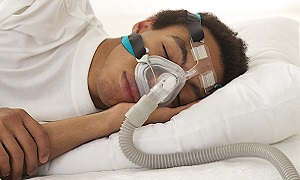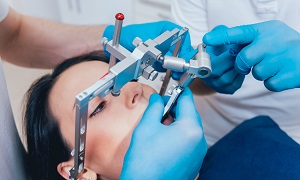Sleep Apnea
A serious sleep disorder in which the breathing of a person repeatedly interrupted during sleep is called Sleep Apnea. People who wake up tired and snore loudly even after taking sufficient full night’s sleep might be suffering from sleep apnea.
People with untreated sleep apnea stop breathing repeatedly during their sleep, sometimes hundreds of times. This means the brain and the rest of the body may not get enough oxygen.
Types of Sleep Apnea
Central Sleep Apnea: It occurs when your brain is unable to send proper signals to the muscles responsible for controlling breathing.
Obstructive Sleep Apnea: It occurs when the throat muscles relax and it is a more common form of sleep apnea.
Complex Sleep Apnea syndrome: Another name for the condition is treatment-emergent central sleep apnea. It occurs when someone suffers from both central sleep apnea and obstructive sleep apnea.
Causes of Sleep Apnea
Central Sleep Apnea: When your brain fails to transmit signals to the breathing muscles, central sleep apnea occurs. This results in no efforts for breathing for a short period of time. Ultimately you wake up with shortness of breath or you have difficulty in falling asleep or staying asleep.
Obstructive Sleep Apnea: When the muscles at the back of the throat relax, it causes obstructive sleep apnea. The muscles support the tonsils, the soft palate, the tongue, the triangular piece of tissue hanging from the soft palate (called uvula) and the sidewalls of the throat. Your airway closes or narrows as you breathe in when the muscles relax.
The oxygen level in your blood lowers because there is a shortage of air. Your brain realizes your inability to breathe properly and you wake up from your sleep to reopen your airway. You might choke, snort or gasp. This repeats for 5 to 30 minutes, at intervals in the night and impairs your ability to have a sound sleep.
Symptoms of Sleep Apnea
The symptoms of central sleep apnea and obstructive sleep apnea overlap and it is often confusing to determine which type you are suffering from. The most common symptoms are:
- Episodes during which you stop breathing during sleep
- Awakening with a dry mouth
- Hypersomnia or excessive daytime sleepiness
- Loud snoring
- Insomnia or difficulty in staying asleep
- Irritability
- Gasping for air during sleep
- While you stay awake, you face difficulty in paying attention
- Morning headache
Diagnosis of Sleep Apnea
Based on your sleep history along with associated signs & symptoms, your doctor will evaluate your condition. Your doctor might refer you to a sleep disorder center, where sleep experts help you determine whether you need further evaluation. Overnight monitoring of your breathing and other body functions is essential for evaluation when you are asleep at a sleep center. You can also opt for sleep testing. Tests for sleep apnea are:
Home sleep tests
Home sleep tests are some simplified tests that your doctor might provide you to be used at home for diagnosing sleep apnea. The tests measure your airflow, heart rate, breathing patterns and blood oxygen level. Your doctor will prescribe you a therapy without testing more if the results are abnormal. Although monitoring devices don’t diagnose all cases of apnea, your doctor might recommend you polysomnography even on normal results in the initial testing.
Nocturnal polysomnography
During nocturnal polysomnography, your doctor will hook you up to equipment that monitors your brain activity, heart, breathing patterns, lung activity, blood oxygen levels, arm & leg movements while you sleep.
Treatment options for Sleep Apnea
Your doctor may recommend changes in lifestyle if you are suffering from mild sleep apnea, like quitting smoking or losing weight. He or she might recommend treatment for allergies if you have nasal allergies. If you are having moderate to severe apnea, there are various other treatments. There are some specific devices that open up the blocked airway.
Therapy
Continuous positive airway pressure (CPAP)
Oral appliances
An oral appliance for keeping your throat open is another option. Some appliances bring your jaw forward to open the throat that helps to relieve mild obstructive sleep apnea and snoring.
Other airway pressure devices
You can use different types of airway pressure devices that adjust the pressure while you are fast asleep. Some of them supply bilevel positive airway pressure (BPAP). They provide less pressure when you exhale and more when you inhale.
Supplemental oxygen
If you are suffering from central sleep apnea using supplemental oxygen can help. To deliver oxygen to the lungs, different forms of oxygen are available with devices.
Adaptive servo-ventilation (ASV)
Adaptive servo-ventilation (ASV), an airflow device recognizes your breathing pattern and stores the information. The machine utilizes the pressure to normalize the breathing pattern and prevents pause in your breathing when you fall asleep.
Surgery
When other treatments fail, surgery is the only option.
Tissue removal
Tissue removal surgery is also known as Uvulopalatopharyngoplasty or UPPP or UP3. Your doctor will remove the tissue from the rear side of your mouth and the top of your throat during the procedure. The doctor will also remove adenoids and tonsils. It stops the throat structures from causing snoring.
Tissue shrinkage
Shrinking the tissue at the rear of the mouth and the back of the throat is another option. It is useful in mild to moderate sleep apnea.
Jaw repositioning
Nerve stimulation
During nerve stimulation, your doctor will insert a stimulator for the nerve responsible for controlling the tongue movement. The tongue remains in a position to keep the airway open due to this increased stimulation.
Implants
The doctor will implant soft rods made of plastic or polyester into the soft palate.
Tracheostomy
Tracheostomy involves creating a new air passageway. You may need this treatment if you are suffering from severe, life-threatening sleep apnea. Your doctor will create an opening in your neck and insert a plastic or metal tube to allow breathing.
Some other types of surgery may help greatly in reducing snoring. They are effective treatments of sleep apnea as they enlarge or clear the air passageways. The treatments involve surgeries to remove adenoids or enlarged tonsils and weight-loss surgery.


